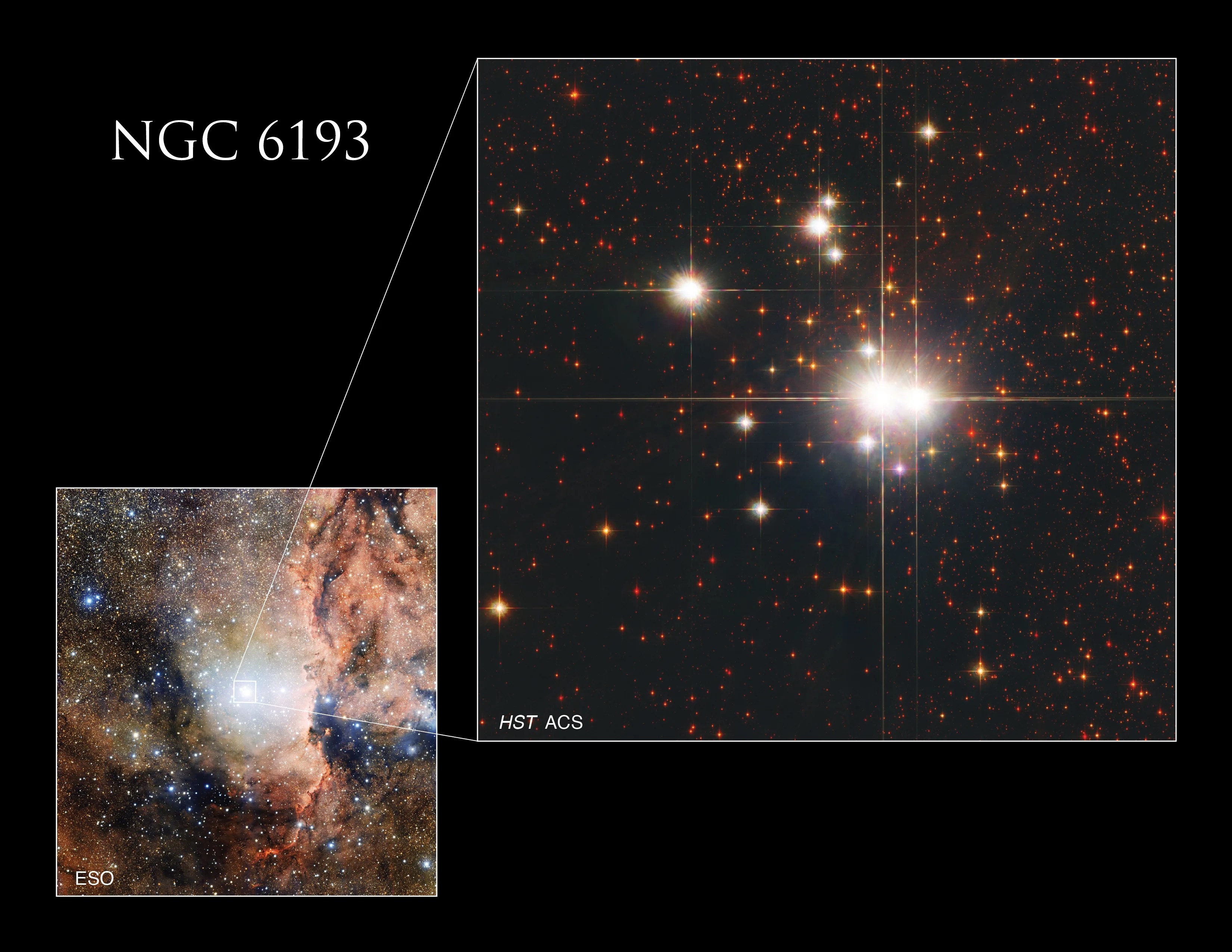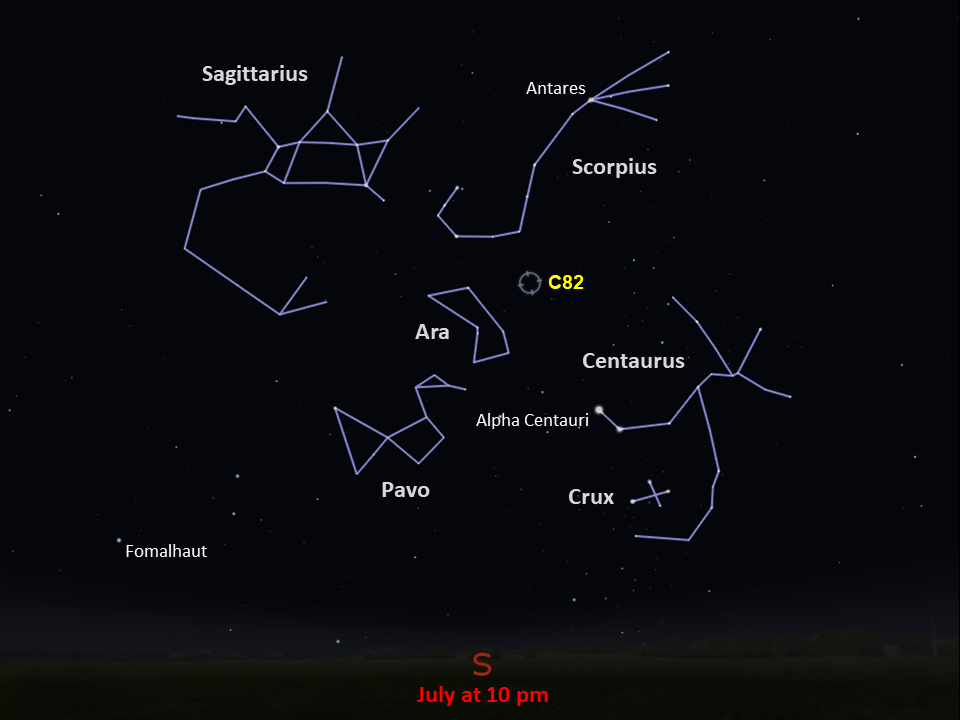Caldwell 82
This bright open cluster of stars is just visible to the unaided eye away from light-polluted skies.
Distance
3,700 light-years
Apparent Magnitude
5.2
constellation
Ara
object type
Open Cluster

This open star cluster, Caldwell 82 (or NGC 6193), is host to about 30 stars. It includes two O-type stars, the most massive and luminous stars known. O-type stars are very rare and very hot, exceeding 30,000 Kelvin. (For reference, our Sun has a temperature around 5,800 Kelvin.) Only about 1 in every 3 million stars in our stellar neighborhood is an O-type star.
These rare O-type stars can provide greater insight into the star clusters in which they exist. For astronomers to accurately determine the masses of star clusters containing O-type stars, it is important that they understand how often these massive stars form as part of multiple-star systems. The visible and infrared observations used to create this image of Caldwell 82 were made with Hubble’s Advanced Camera for Surveys to determine whether the O-type stars in the cluster are in systems containing more than one star. Both of the cluster’s O-type stars do, in fact, belong to multiple-star systems.

Caldwell 82 is located in the constellation Ara roughly 3,700 light-years from Earth. It appears fairly bright in the sky with an apparent magnitude of 5.2 and can be seen with the naked eye under dark skies. It appears as a faint patch, but a small telescope will resolve its brightest stars. The cluster can be most easily spotted during the Southern Hemisphere’s winter, but it can also be observed from equatorial latitudes in the Northern Hemisphere during its summer. Scottish astronomer James Dunlop was the first to note the cluster, while observing in Australia in 1826.

Glossary
Apparent Magnitude - The brightness of an astronomical object as seen from Earth, influenced by the object's distance from Earth, its absolute magnitude, and even gas and dust that lie between the object and Earth.
Nebula - An interstellar cloud of dust and gas; either a location where new stars are being forged or a cloud of material ejected into space by a dying star.
Open Cluster - A group of stars loosely bound by gravity, destined to be short lived because the gravitational interactions between members are weak enough that stars can be drawn away from the cluster by stronger gravitational forces.
Explore Hubble's Caldwell Catalog
The following pages contain some of Hubble’s best images of Caldwell objects.

Caldwell 1
Also known as NGC 188, this group of stars formed from a large cloud of gas making the stars roughly…

Caldwell 2
This shell of gas is expanding outward, away from the dying star within.

Caldwell 3
This barred spiral galaxy was first spotted by British astronomer William Herschel in April 1793 in the constellation Draco.




